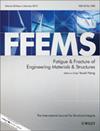Effects of Excavation Process and External Disturbance on Fracture Behavior of Rock Around Tunnel: Large-Scale Laboratory Tests
Abstract
In this study, taking the deep-buried tunnel excavation as the background, the loading path for simulating excavation unloading and external disturbance was determined. A series of biaxial compression tests were conducted on large sandstone specimens containing single or double circular tunnels with different excavation advances. The results show that the stress adjustment required to fracture the surrounding rock gradually decreases as the tunnel's excavation proceeds. The presence of the preceding tunnel reduces the stress adjustment needed for crack initiation in the surrounding rock during the lagging tunnel excavation. In contrast to the lagging tunnel fracture process for twin-tunnel specimens, the V-shaped notched tunnel fracture for single-tunnel specimens starts at the tunnel entrance and gradually moves toward the tunnel face. The twin-tunnel specimen exhibits more concentrated surface strain and more extensive fracture propagation with more shear cracks than the single-tunnel specimen. Additionally, the sudden change in the deformation trend of the surrounding rock indicates the fracture occurrence. The deformation around the tunnel implies that the range of excavation-damaged zone in the surrounding rock is greater than the range of crack propagation.

 求助内容:
求助内容: 应助结果提醒方式:
应助结果提醒方式:


